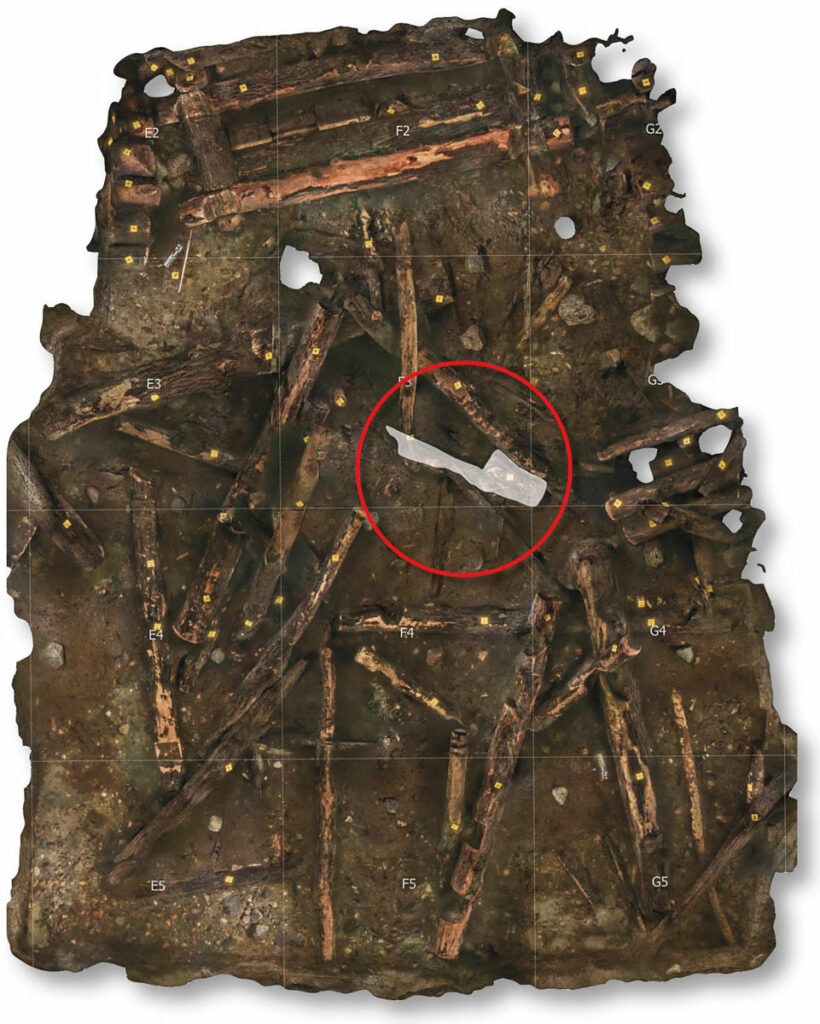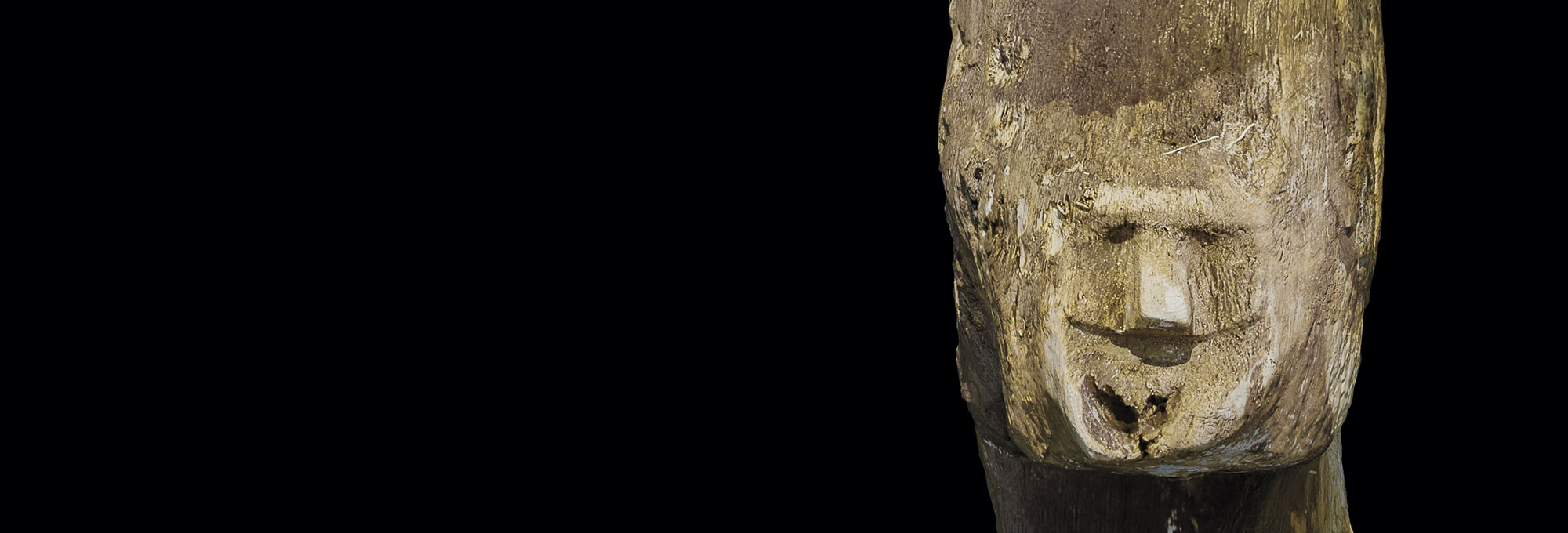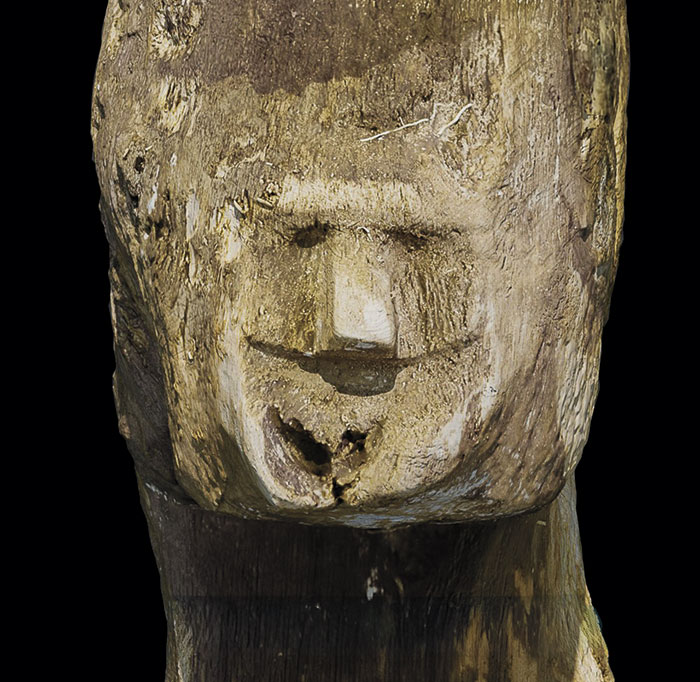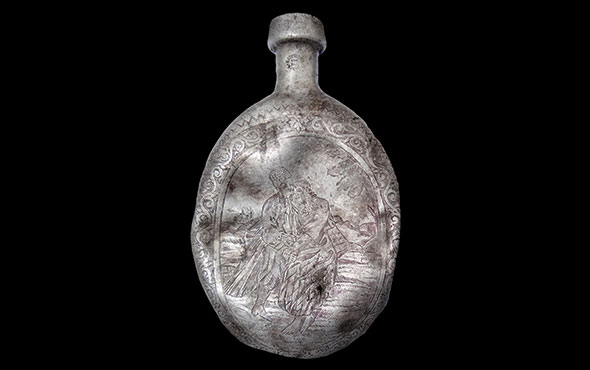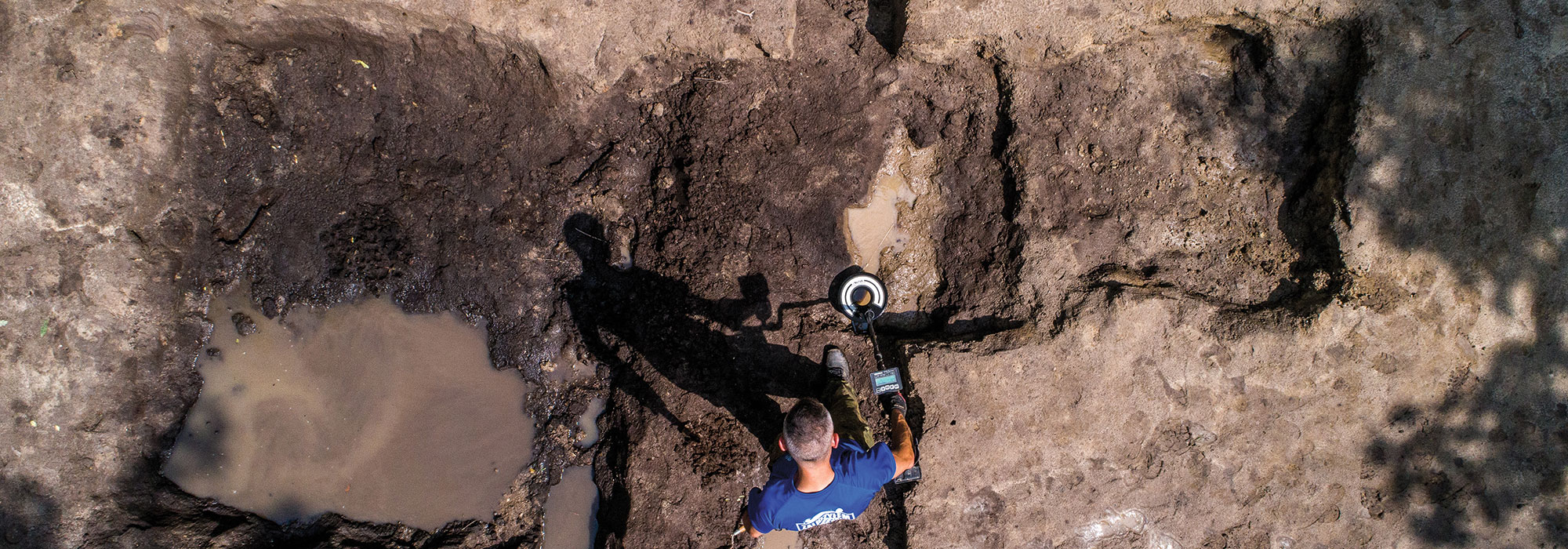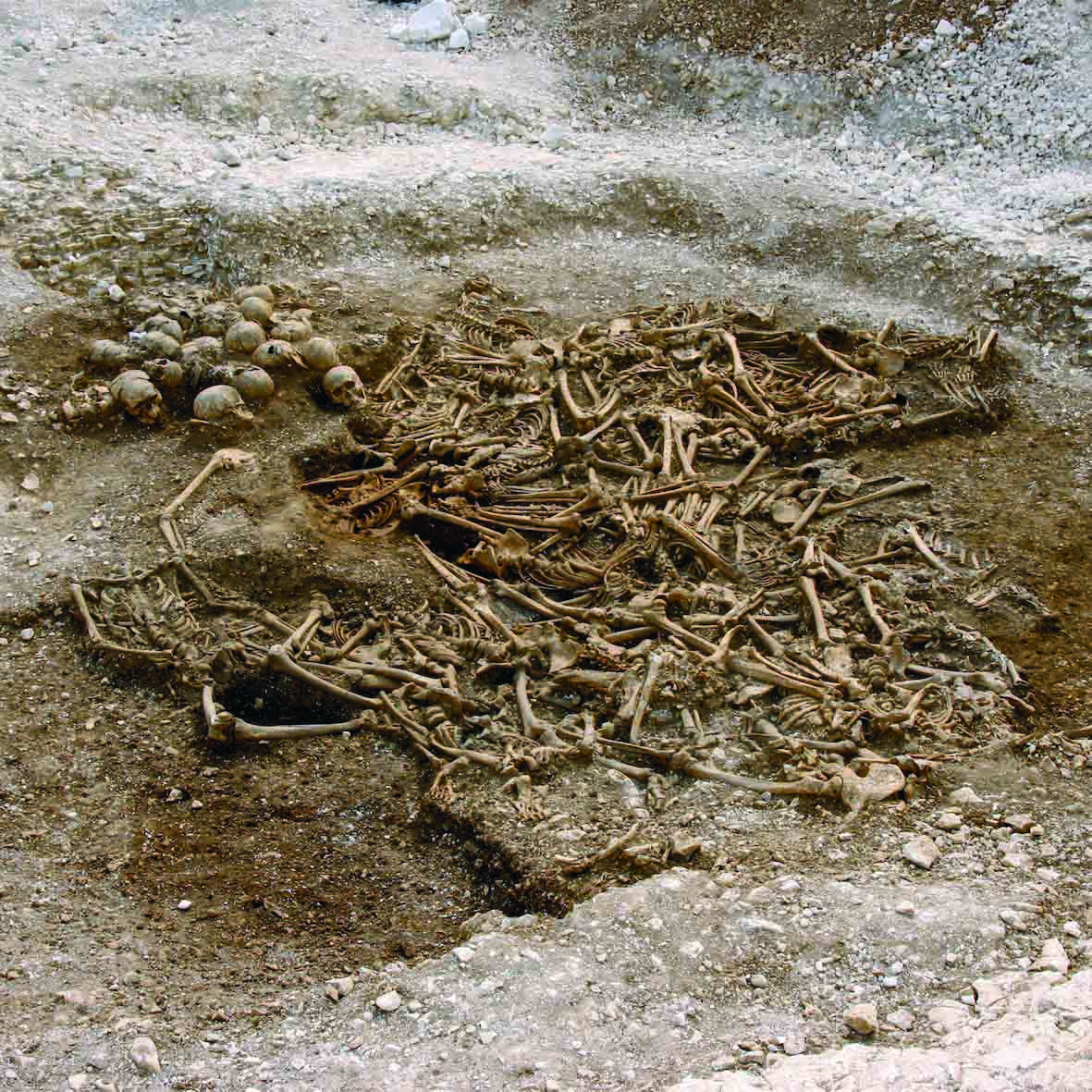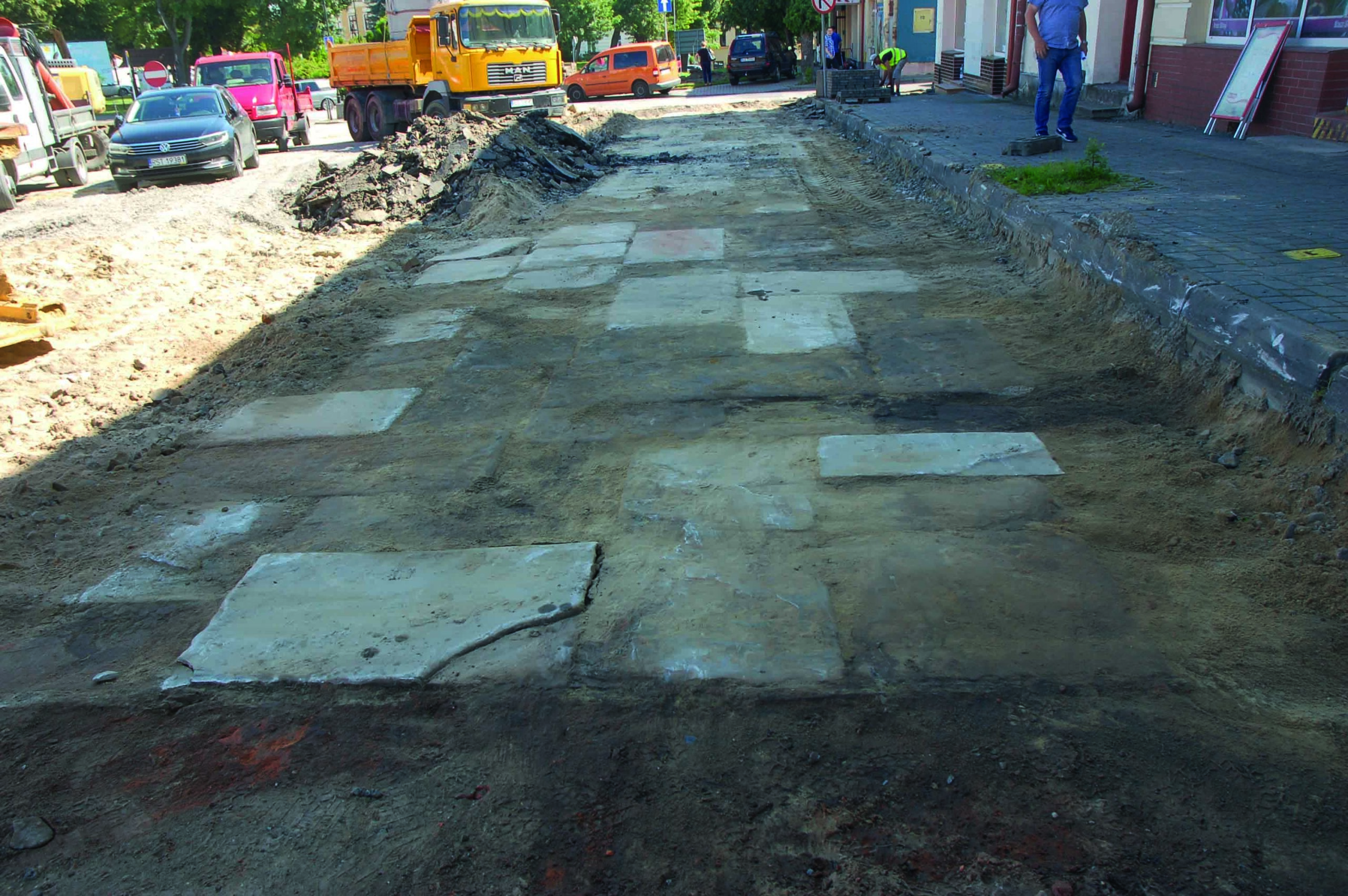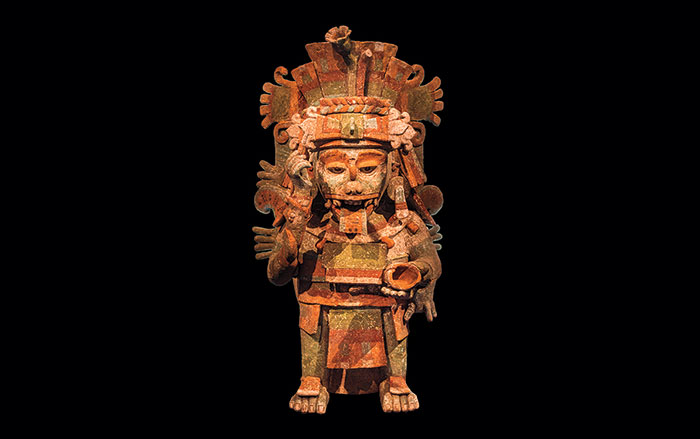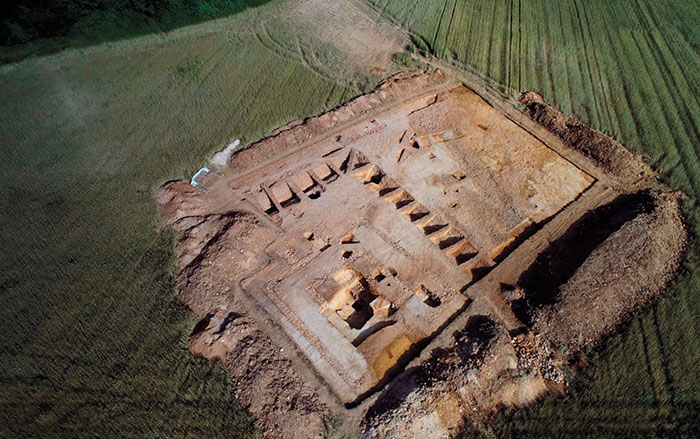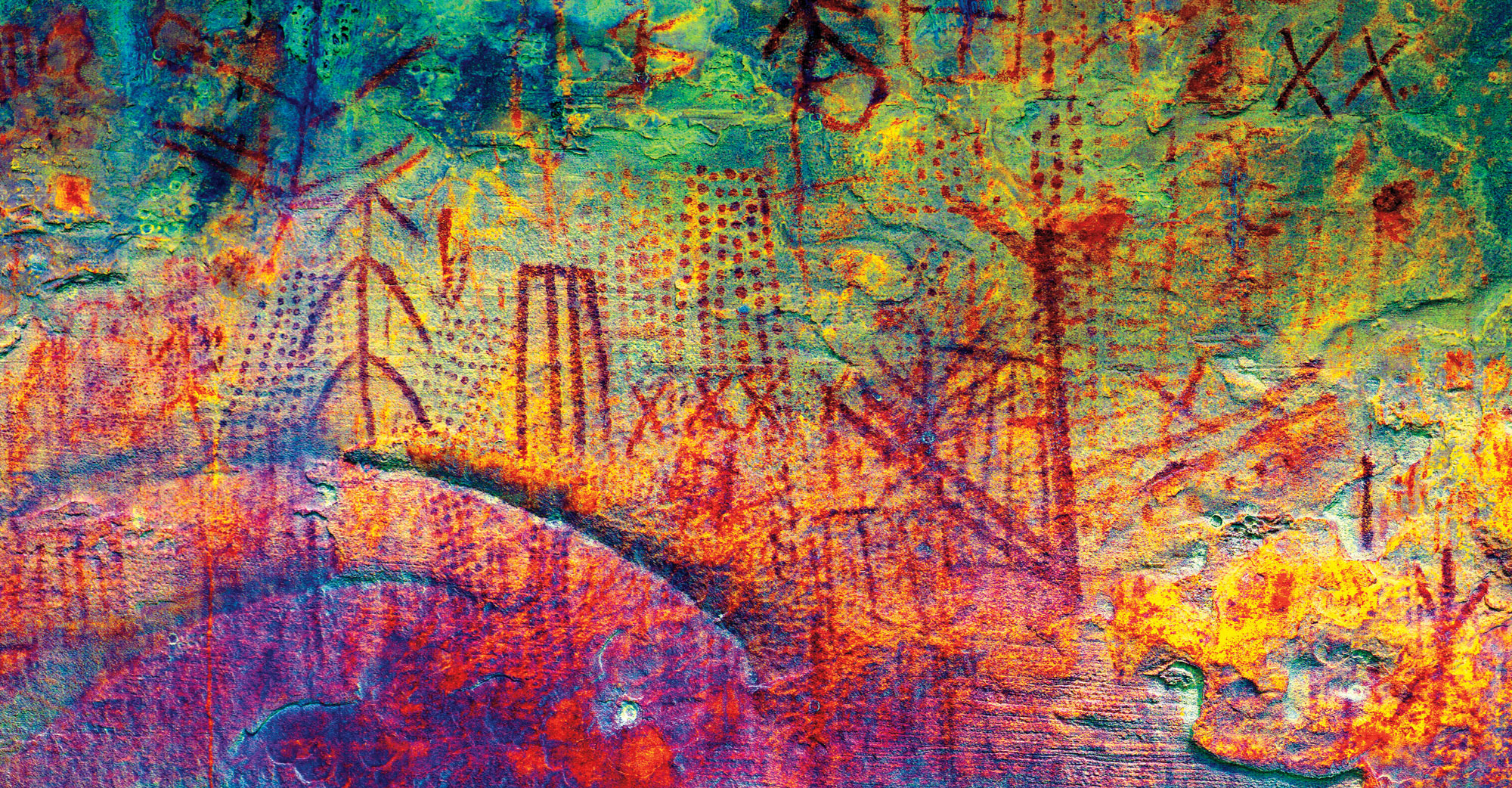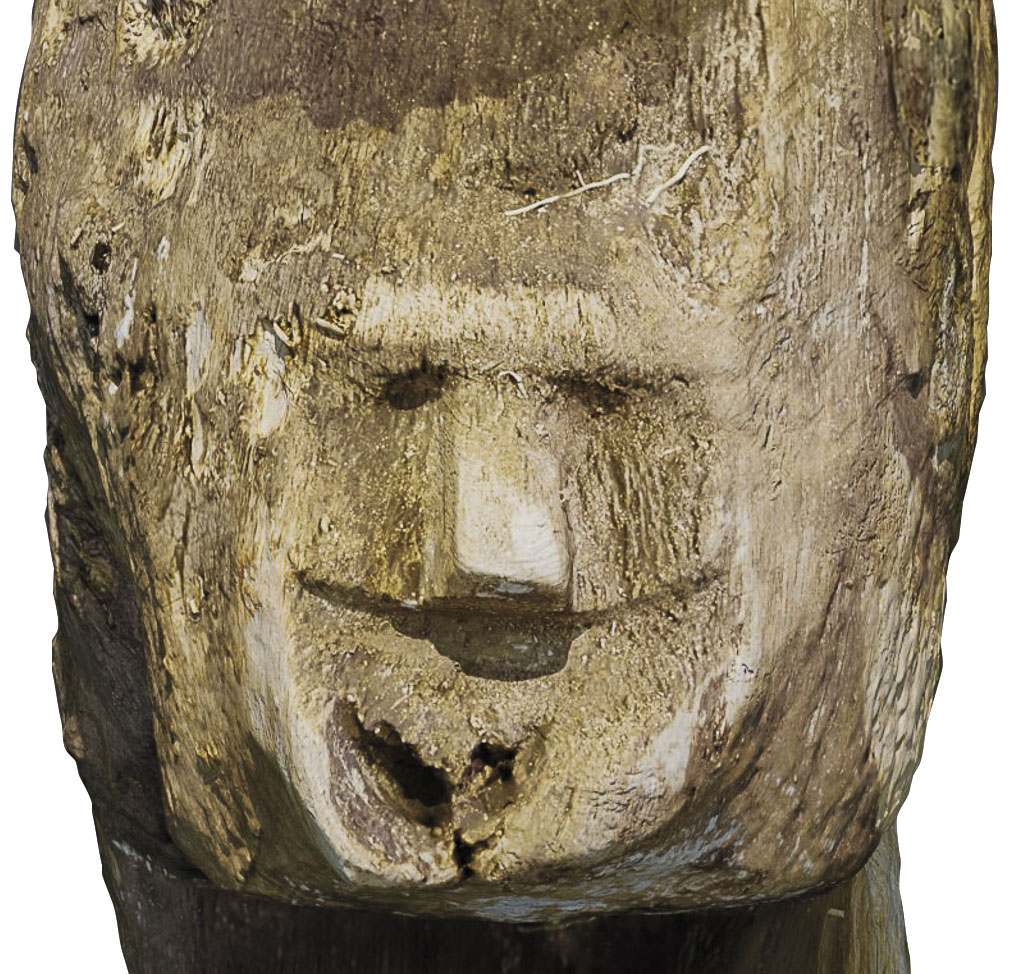
In the early eleventh century, a landslide on the island of Ostrów Lednicki in western Poland caused a hillfort to collapse and slip to the bottom of Lake Lednica. A team of underwater archaeologists investigating the submerged ruins discovered a carving of a human face measuring 4.7 inches high by 3.5 inches wide at the end of a wooden beam. According to medieval chronicles, sculptures of animals and people adorned gates and palisades of Slavic settlements as well as temple interiors. However, these depictions rarely survive in the archaeological record. Researchers believe this carving may portray a deity, hero, or ancestor whose image might have safeguarded the settlement’s inhabitants against malicious spirits. “Protective gods and goddesses were present everywhere,” says archaeologist Andrzej Pydyn of Nicolaus Copernicus University. “They kept evil outside sanctuaries and houses of settlements.”
The eyes, nose, and chin chiseled into the beam are strikingly similar to features of sculpted faces found at roughly contemporaneous sites elsewhere in Poland and in Russia, Pydyn says. He suggests that this depiction was part of a local stylistic repertoire. Dendrochronological analysis of the beam indicates that the tree from which it was fashioned was likely felled in a.d. 967. A year earlier, Mieszko I (reigned ca. a.d. 960–992), ruler of the first unified Polish state, had been baptized, initiating the spread of Christianity throughout the country. “This discovery shows that traditional pagan beliefs were kept even after the transition to Christianity began,” says Pydyn.
